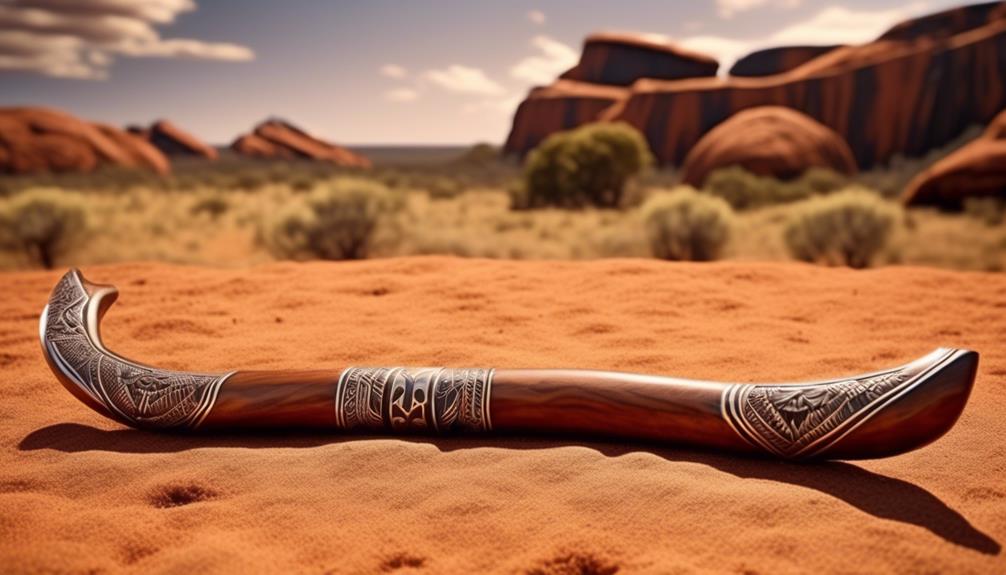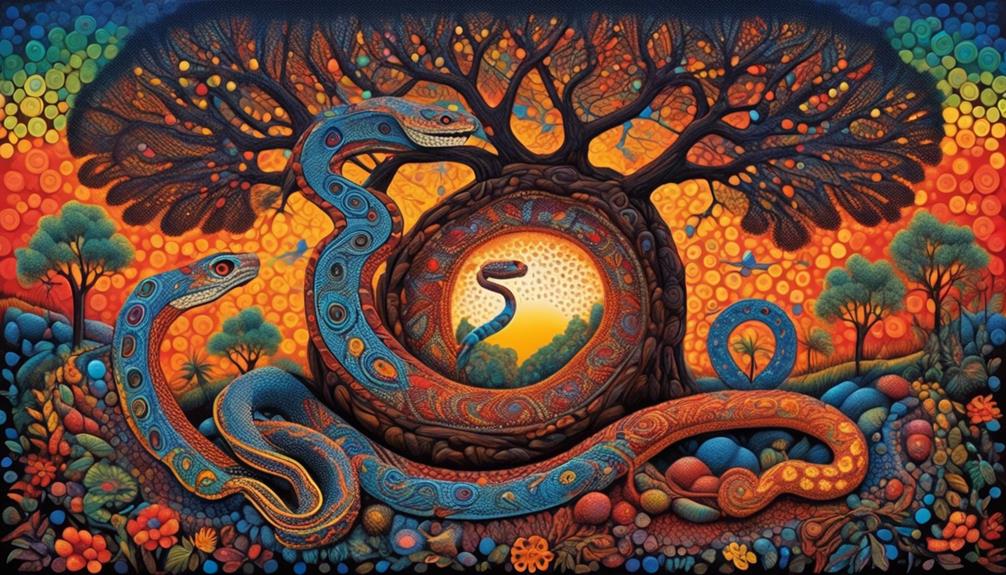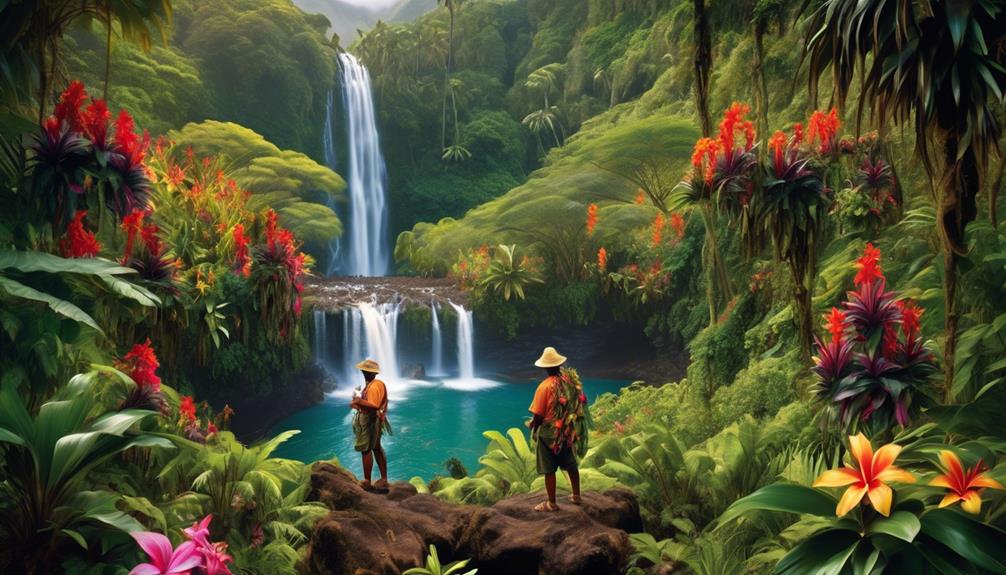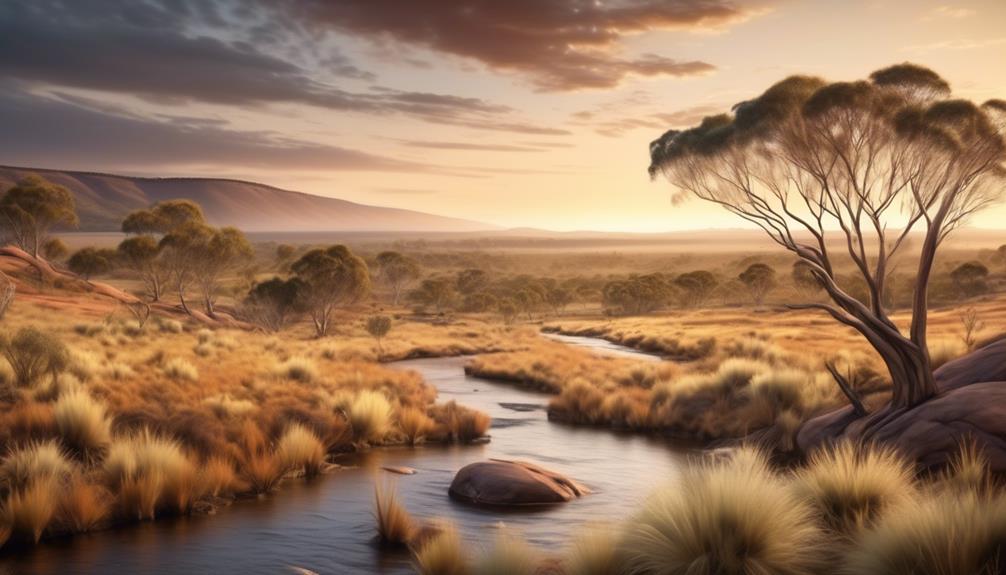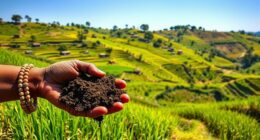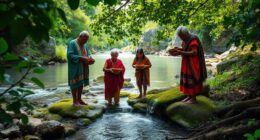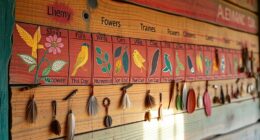Have you ever stopped to consider the specific weapon that Aboriginal Australians used with such skill and precision? The answer may surprise you.
As we explore the rich history and traditions of the Aboriginal peoples, we uncover the secrets of their weaponry and the unique techniques that made them formidable hunters and warriors.
Join us as we unravel the mystery behind the weapon of choice for the ancient Aboriginal Australians and discover the fascinating insights it holds into their way of life.
Key Takeaways
- Boomerangs were skillfully crafted and used for hunting birds and small animals.
- Spears were crafted with precision and could be thrown with great accuracy.
- Woomeras, spear throwers, increased the velocity and distance of spear throws, providing a tactical advantage in combat.
- Stone axes served as formidable tools in battle, inflicting significant damage, and were also used for daily tasks.
Traditional Hunting Weapons
Traditional hunting weapons have been crucial to the survival and sustenance of Aboriginal Australians for thousands of years. Among these weapons, boomerangs and spears stand out as essential tools for hunting and gathering food.
Boomerangs, known for their unique curved shape, were used for hunting birds and small animals. These handheld wooden tools were skillfully crafted to return to the thrower, making them valuable for multiple uses and ensuring that no resources were wasted.
In addition to boomerang hunting, spear throwing was another common method employed by Aboriginal Australians. Spears were crafted with precision and could be thrown with great accuracy, enabling hunters to take down larger prey from a distance. The use of spears required extensive knowledge of the environment and the behavior of animals, emphasizing the deep connection between the Aboriginal people and their surroundings.
Both boomerangs and spears exemplify the resourcefulness and ingenuity of Aboriginal Australians, reflecting their commitment to sustainably procuring food from the land while respecting the natural world around them.
Tools for Warfare
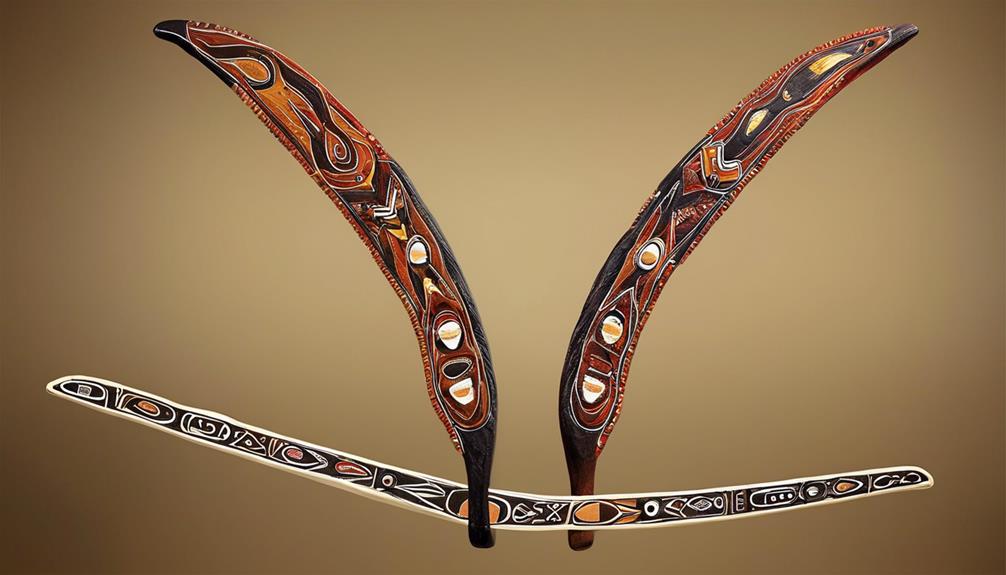
Boomerangs and spears, integral to the survival of Aboriginal Australians, were also adapted as tools for warfare, showcasing the ingenuity and versatility of these traditional weapons.
Spear throwers, known as woomeras, were crucial in increasing the velocity and distance of spear throws, offering a tactical advantage in combat. These devices allowed for swift and precise strikes, enhancing the effectiveness of spears as offensive weapons.
Additionally, stone axes served as formidable tools in battle, capable of inflicting significant damage while also being utilitarian implements for daily tasks. The duality of these weapons highlights the resourcefulness of Aboriginal Australians, who ingeniously repurposed their hunting tools for protection and conflict.
In times of warfare, these adaptations played a vital role in safeguarding communities and ensuring their survival. The seamless transition of traditional hunting weapons into instruments of defense underscores the practicality and adaptability of Aboriginal Australian culture, where every tool served a dual purpose, embodying the spirit of resilience and unity within their society.
Adaptation to Modern Implements
Adapting to modern implements has been an essential aspect of our continued survival and resilience as a community. As we navigate the challenges of embracing modern technology while preserving our cultural heritage, we've found innovative ways to incorporate new tools into our traditional practices. Here are four key ways in which we've adapted to modern implements:
- Integrating modern technology into traditional crafts: We've seamlessly blended the use of modern tools with age-old crafting techniques, allowing us to create unique and culturally significant artworks that resonate with people across different generations.
- Utilizing modern equipment for hunting and gathering: While respecting our ancestral traditions, we've integrated modern equipment such as firearms and GPS devices into our hunting and gathering practices, enabling us to sustainably harvest resources from our lands.
- Embracing modern communication tools for cultural preservation: We've leveraged the power of social media and digital platforms to share our stories, songs, and dances, ensuring that our rich cultural heritage remains alive and accessible to future generations.
- Balancing tradition and innovation in ceremonial practices: Through careful consideration and community dialogue, we've incorporated modern implements into our ceremonial rituals, allowing us to honor our traditions while embracing the opportunities that modern technology offers.
Significance of Weaponry

Navigating the intersection of tradition and modernity, our weaponry holds a profound significance in our cultural heritage and daily lives. The cultural significance of our traditional weapons can't be overstated. They aren't merely tools for hunting or warfare; they embody our connection to our ancestors, our land, and our spirituality. The passing down of knowledge about weapon-making and usage from one generation to the next reinforces the bonds within our community and preserves our identity in a rapidly changing world.
Furthermore, the technological advancement in weaponry reflects our ability to adapt and thrive in contemporary society. While we honor our ancient traditions, we also recognize the need to embrace innovation. Modern materials and techniques have enhanced the effectiveness and durability of our weapons, ensuring their continued utility in hunting, protection, and ceremonial practices.
Evolution of Aboriginal Weapons
Over time, our traditional weapons have undergone significant changes, reflecting both our cultural heritage and our ability to adapt to new circumstances. The evolution of Aboriginal weapons is a testament to our rich history and resourcefulness. Here are some key points to consider:
- Cultural Significance: Our weapons are deeply rooted in our culture, with each design and material holding specific cultural meanings and traditions. The evolution of these weapons has been intertwined with our cultural practices, rituals, and beliefs, showcasing the importance of preserving our heritage.
- Technological Advancements: As our society evolved, so did our weaponry. From the introduction of new materials to advancements in crafting techniques, our weapons adapted to the changing technological landscape. We embraced innovations while maintaining the essence of our traditional designs.
- Environmental Adaptations: The evolution of our weapons also reflects our ability to adapt to different environments. Different regions called for different hunting or combat strategies, leading to the development of diverse weapons tailored to specific landscapes.
- Continued Relevance: Despite the changes, many traditional weapons remain relevant in modern times, serving as a reminder of our past while still being utilized in various cultural ceremonies and activities.
Frequently Asked Questions
What Specific Materials Were Used to Create Traditional Aboriginal Hunting Weapons?
Traditional materials, such as wood and stone, were used to create hunting weapons by Aboriginal Australians. These materials were carefully crafted to produce effective tools for hunting and survival.
The use of natural resources reflects the deep connection to the land and the environment that Aboriginal people have maintained for generations.
The traditional methods and materials used in creating these hunting weapons have been passed down through the ages, preserving an important aspect of Aboriginal culture.
How Were Tools for Warfare Passed Down Through Generations Within Aboriginal Communities?
Passing down tools for warfare within Aboriginal communities is a sacred tradition. Our ancestors forged weapons with cultural significance and spiritual connection, imbuing them with strength and wisdom.
Through storytelling and practical demonstrations, we ensure the next generation understands the importance of these tools. It's like passing down a flame that has burned for centuries, igniting a sense of duty and respect for our heritage.
What Challenges Did Aboriginal Australians Face When Adapting to Modern Implements for Hunting and Warfare?
Adapting to modern tools posed challenges for Aboriginal Australians in hunting and warfare evolution. We had to navigate the shift from traditional weapons to contemporary implements, which required learning new techniques and strategies.
Additionally, the availability and accessibility of these modern tools also presented obstacles. Despite these challenges, we persevered, embracing innovation while honoring our cultural heritage.
It's been a journey of adaptation, but one that has allowed us to thrive in a changing world.
Can You Explain the Spiritual and Cultural Significance of Weaponry Within Aboriginal Culture?
Spiritual significance of weaponry within Aboriginal culture lies in its connection to the land and ancestors. Cultural significance is rooted in the rituals and stories passed down through generations.
Weapons embody our history and traditions, serving as both practical tools and symbols of identity. They represent our resilience and unity as a people. Through them, we honor our heritage and maintain our connection to the spirits of our ancestors.
How Have the Designs and Purposes of Aboriginal Weapons Evolved Over Time?
Over time, the designs and purposes of Aboriginal weapons have evolved, reflecting the cultural significance and traditional materials. Generational transmission has been key in preserving and adapting these designs.
The evolution of designs has been influenced by practical needs and shifts in cultural practices, showcasing the adaptability of Aboriginal weaponry. This evolution is a testament to the enduring importance of these weapons within Aboriginal culture.
Conclusion
In conclusion, the traditional weapons used by Aboriginal Australians, such as the boomerang, spear, and woomera, weren't only tools for hunting and warfare, but also symbols of cultural identity and survival.
As the adage goes, 'necessity is the mother of invention,' and the evolution of Aboriginal weaponry reflects the resourcefulness and adaptability of indigenous communities throughout history.
It's fascinating to see how these ancient tools have shaped the identity and resilience of Aboriginal Australians.
